It’s only the beginning of December, but everywhere in the world preparations for Christmas have already started. The most important avenues in our cities shine under sparkling Christmas lights, the Christmas markets are open, shops are playing Christmas songs, and people are already searching for the perfect Christmas tree to decorate at home.
Though we are all celebrating the same holiday, different Christmas customs and traditions in Europe make every celebration special in its way.
It’s the perfect time to get into the holiday spirit, so I’m inviting you to join me on a virtual tour to discover all the Christmas traditions in Europe!
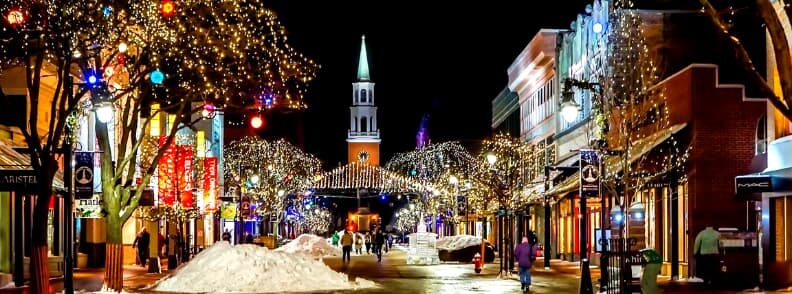
When is Christmas celebrated in Europe?
Believe it or not, we don’t all celebrate Christmas on the same date in Europe. For most of us, Christmas is on 25 December, according to the Gregorian Calendar, used by Catholic Churches and some Orthodox Churches.
However, countries like Russia, Armenia, Georgia, North Macedonia, Montenegro, Serbia, and Kosovo, celebrate Christmas on 7 January, according to the Julian calendar, used by many Orthodox Churches.
Some countries celebrate Christmas on both dates, such as Belarus, Ukraine, the Republic of Moldova, and Bosnia and Herzegovina.
And if we can’t even decide on the same date, you can start to imagine how different Christmas customs and traditions in Europe are!
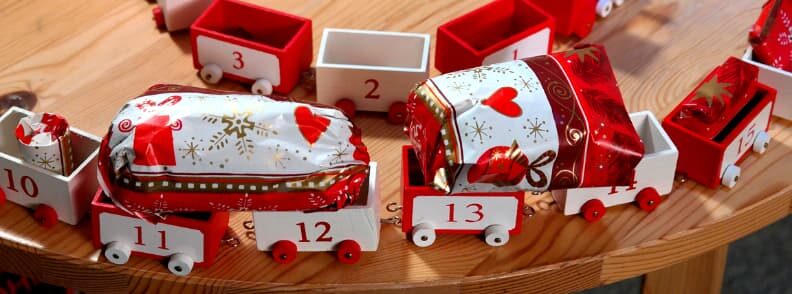
What are the Advent customs and traditions in Europe?
Paper Advent Calendars with small treats are the most popular and the easiest to shop for or make at home. However, many families who live in Austria, Belgium, and Denmark prefer the beautiful Advent Wreaths. These are made from evergreen twigs, decorated with ribbons or other Christmas ornaments, and four candles. Every Sunday in Advent, a candle gets lit, and the family members sing some carols for the occasion.
In Croatia, the Advent Wreath candles have different colors (purple and pink), and different meanings (hope, peace, joy, and love). As part of Christmas traditions in Germany, they call the Advent Wreath the Adventskranz. They usually put it on display on beautiful mantels created by German shelf companies.
And, in some villages in Switzerland, they also have an advent calendar where every day is a certain house from town. And when it’s their turn, that person hosts a party for all the villagers.

When is the Christmas tree decorated in Europe?
Many people get into the holiday spirit early and start decorating the tree right from the beginning of December. However, there are others, like the Croatians, who choose to decorate them on St. Nicholas’s day, because that doesn’t belong together with their local Christmas customs and traditions.
Among the most patient ones are people living in Austria, Germany, Hungary, Poland, and Finland. They wait to decorate the tree on Christmas Eve.
Are all Christmas trees the same in Europe?
Most of us have an evergreen tree, which we decorate with electric candles and/or garlands, shiny and/or sparkly globes, ornaments of various shapes, and a star on top. If the family has kids, you’ll also see sweets in the tree, as a treat for the small ones (and not only!). Although this is part of the widespread Christmas customs and traditions, the tree is not always the same.
The Georgians have Chichilaki, a different kind of Christmas tree. It is not an evergreen one, but it is made out of dried wood and shaved into curly strips to resemble a small tree. The Chichilaki is decorated with small fruits and sweets.
What Christmas ornaments do Europeans like?
Croatians prefer ornaments shaped like fruits. That’s because in the past they used to hang real or candied fruits on their Christmas trees.
There seems to be a preference for paper ornaments in some countries. In Lithuania, they use ornaments of different geometric shapes made out of white paper straws. The Norwegians have small heart-shaped baskets woven out of paper strips. And, on a slightly creepier note, we have the fake spider webs used by the Ukrainians and the Polish to decorate their Christmas trees.
The Swedes take extra care of their Christmas trees and place goats made of straws to protect them. And people in Iceland use their national flag as a decoration, making national pride part of their Christmas customs and traditions.
Annemarie from Travel on The Brain said that in Germany, ornaments are often a mix of delicately painted glass baubles and wooden or straw ornaments. The region of the Ore Mountains, in particular, is very renowned for its excellent wood-crafting skills. You will find plenty of wooden pyramids and Schwibbogen in people’s homes, most of which were handmade in that region. The best place to buy these souvenirs is at German Christmas markets.
Why are spider webs a popular Christmas decoration in Poland?
White fake spider webs are traditionally used to decorate Christmas trees in Poland during the winter holidays. This Polish custom tradition is thought to have started in the Silesia region, where they consider spiders to be a sign of luck, success, and wealth.

Is Santa the same all over Europe?
When we say Santa Claus we usually think of someone resembling the one from Coca-Cola’s Christmas commercials. However, in some countries, Santa may not be that old or even that friendly according to old Christmas customs and traditions.
According to German and Austrian customs and traditions, there’s Christkind, who is a baby with lovely golden hair, and wings, symbolizing baby Jesus. It is also Baby Jesus who brings gifts to the children from the Czech Republic, where it is called Ježíšek, and to those from Slovakia, where he is called Ježíško.
The Cypriots have Ai-Vasilis, and the Greeks have Aghios Vassilis. They are both the same St. Basil, who visits children on New Year’s Eve. Like Santa Claus, he arrives exhausted, enjoys the treats left for him under the Christmas tree, and leaves presents under it.
There is also the Tovlis Papa or Tovlis Babua (Grandfather Snow) of the Georgians, who delivers gifts on New Year’s Eve, as well. He is dressed in a heavy white sheep wool cloak, similar to that worn by Georgian shepherds, but in a different color. And the Spanish people from the Basque country have Olentzero, a big chubby guy who is dressed like a Basque farmer and smokes a pipe.
Another variation of Santa Claus is the Danish Julemanden. He brings gifts and has a sleigh, reindeer, and elves. He just has a different name, meaning Chrismas Man. The same goes for the Hungarian Télapó (Old Man Winter), the Latvian Ziemassvētku vecītisand, the Norwegian
Julenissen, the Portuguese Pai Natal, and the Italian Babbo Natale.
But the Italians also have Befana, an old lady who brings presents on Epiphany night. She is the main gift-bringer in Italy.
Is Santa Claus the same as Saint Nicholas?
In some places, he is. For children in Luxembourg, Belgium, and the Czech Republic, the main gift-bringer is Sinterklass / Svatý Mikuláš (St. Nicholas) who brings presents on 6 December, because Christmas is a religious celebration there. Children clean their shoes and leave something for Sinterklaas (e.g. drawings, poems, sweets) on the evening of 5 December. The next morning, if they were good that year, their shoes are filled with sweets and small presents.
In some countries, St. Nicholas likes playing good cop / bad cop. He brings an assistant (Krampus in Austria and Croatia, Zwarte Piet in Belgium and the Netherlands, Schwarzer Peter in Germany). The latter sometimes helps deliver the presents according to St. Nicholas’s instructions, but his main role is to punish the bad kids. He does this either by leaving a piece of coal instead of a gift or… kidnapping the kids in a sack and carrying them to Spain!
In the Czech Republic, St. Nicholas is helped by angels, while the punishing is done by demons.
People celebrate with presents on both St. Nicholas’s day and Christmas Eve, according to Romania, Cyprus Germany, the Netherlands, Switzerland, and Slovakia customs and traditions
Father Christmas is known as Pai Natal in which European country?
In Portugal, they use the name Pai Natal for Father Christmas, commonly referred to as Santa Claus. Like in other European countries, Pai Natal is a well-known Christmastime character in Portugal, connected to the custom of exchanging gifts and bringing people joy. Children frequently send letters to Pai Natal outlining what they want to receive, and he delivers gifts to kids who have been nice all year on Christmas Eve.
Who helps Julemanden deliver presents?
According to Danish Christmas legends, Julemanden is helped by a group of assistants called nisser (or elves) to prepare and deliver presents to children on Christmas Eve. According to certain legends, Julemanden also travels with a group of reindeer to distribute presents to youngsters all around the world. These assistants are frequently shown as little, cheeky animals with pointed ears and caps, and they are known to be quite skillful at creating toys.
With whom do Europeans spend their Christmas holidays?
For most of us, Christmas is a family affair, and we see it as an opportunity to reunite the whole “clan”. Among the countries that have Christmas with the extended family, we count Albania, Armenia, Croatia, Denmark, Finland, Iceland, Luxembourg, Monaco, and the United Kingdom.
According to Dutch, Polish, and Belgium Christmas traditions, people spend Christmas Eve with close family, and they spend Christmas Day visiting distant relatives and friends.
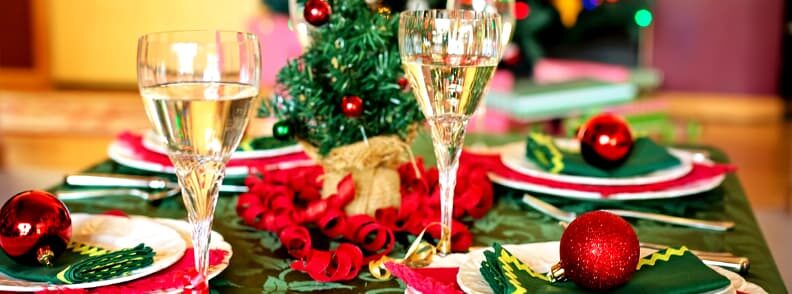
What are Christmas feasts like in Europe?
In many European countries, people prefer to have a lighter meal on Christmas Eve. However, they compensate with a richer dinner on Christmas Day, where they enjoy drinking red wine and feast on roast pork, turkey, goose, or duck. Along with their European Christmas dishes, they may have boiled or baked potatoes, red cabbage, beetroot, and maybe some cranberry jam or sauce according to local Christmas customs and traditions.
Some prefer a light Christmas Eve dinner
Albanians, for example, have a light meal on Christmas Eve, without meat, dairy, or wine. Their European Christmas dishes are prepared with fish, vegetables, and beans.
Armenians also have a light meal, with dishes based on rice, fish, and chickpeas, plus tanabour soup. The soup tanabour is made with yogurt.
Others enjoy a heavier Christmas dinner
There are, however, European countries that have a heavier meal on Christmas Eve, like Belgium, France, Slovenia, Spain, Switzerland, Sweden, and Ukraine.
For example, according to Belgium Christmas traditions, people have an apéritif, consisting of a drink with some small snacks, followed by a starter course, and stuffed turkey, a game, or chicken.
Respecting the traditions in France Christmas, they enjoy roasting turkey or goose, foie gras, lots of cheese, and sometimes oysters and lobster. Talk about fancy European customs and traditions!
Those in Spain traditionally enjoy a meal with pavo trufado de Navidad (turkey stuffed with truffles), though recently they seem to have switched more and more to seafood.
In Sweden, besides eating fish, people may also have prinskorv sausages, julskinka ham, turkey, roast beef, Janssons Frestelse potatoes, cheese, salads, and pickles. However, their Christmas dinner is usually a buffet and everyone chooses what they eat. This means they don’t have to go through all the dishes prepared by the host to respect Swedish Christmas customs and traditions.
There are also the blood sausages of the Estonians, which they eat with sauerkraut. Their neighbors, the Latvians, eat small pies, peas with bacon sauce, bacon rolls, sausages, and cabbage.
Many enjoy fish for their Christmas Eve dinner
Whether the main dish or part of a larger feast, fish is part of the top European Christmas dishes:
- Croatians and Serbians usually have dried cod bakalar
- Italians also enjoy salted cod baccala, but also sardines, eel, clams, and calamari
- Czechs eat carp soup and fried carp with potato salad
- Poles also have carp, after barszcz soup, with uszka dumplings and krokiety. And salatka jarzynowa is a very popular Polish dish that is enjoyed not only for Christmas but also on birthdays and other special occasions.
- Serbians eat carp, as well, right after kapustnica sauerkraut soup
- Hungarians have halászlé fish soup
- Portuguese eat codfish with boiled potatoes and vegetables
- Swedes enjoy a buffet with cold fish, including herring, gravlax salmon, and smoked salmon.
The widely-spread sarma
A very popular traditional dish in many countries is the sarma, made out of minced meat placed in a cabbage leaf or grapevine leaves. It is a traditional Christmas dish in Romania, Hungary, Bulgaria, Bosnia and Herzegovina, Croatia, Macedonia, and Serbia. Eating sarma is also a Swedish Christmas custom and tradition but they call it kåldolmar.
Is there anything odd about the Christmas feast?
Unless you’re referring to odd numbers, I would say no. In Bulgaria, the host prepares an odd number of dishes (usually 7, 9, or 11) and invites an odd number of guests around the dinner table.
For Belarus, numbers are also important: they have to serve 12 fish, to represent the 12 Apostles. They have mushrooms and vegetables as side dishes.
Lithuanians, Poles, Serbians, Ukrainians, and Russians also have a Christmas dinner around the number 12 of the Apostles. Therefore, the host prepares 12 dishes. Usually, their European Christmas dishes don’t contain any meat, eggs, or dairy.
On a sweeter note, people living in France and Monaco prepare 13 desserts for Jesus and his 12 Apostles to respect old Christmas customs and traditions.
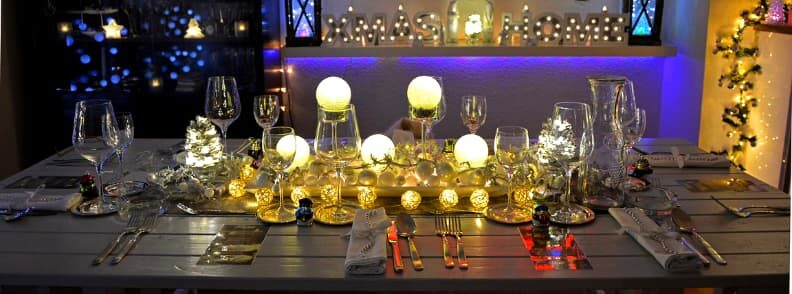
Are there traditional table decorations for Christmas dinner?
When it comes to decorating the dinner table, Bulgarians, Croatians, Poles, and Lithuanians traditionally put hay under the tablecloth. This is a custom that is said to bring good crops for the following year.
According to local Christmas customs and traditions, people from Montenegro and Serbia prefer to put grass straws under the table. This is a symbol of the nativity scene.
On a more cheerful note, the British have a firecracker ready for each guest joining the table.
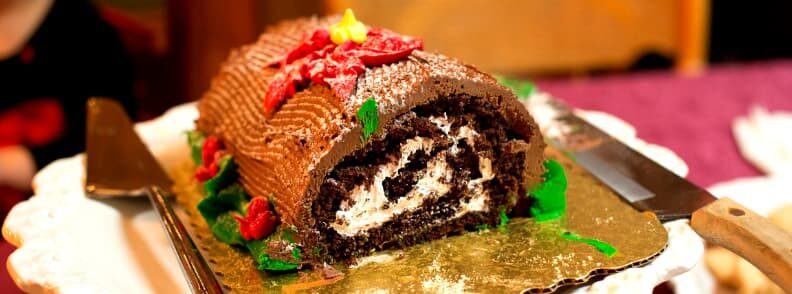
What are traditional European Christmas desserts?
Most of us enjoy eating tangerines, dried fruit, nuts, cookies, and gingerbread at Christmas time. There are, however, several desserts closely tied to Christmas customs and traditions in Europe:
- Armenians eat rojik sweet soujuk
- Croatians love nibbling on the traditional krafne and fritule, which are small jelly doughnuts with different fillings)
- Germans prefer stollen, a cake filled with dried fruit and marzipan
- Greeks have a sweet tooth for kataifi in lemon-scented syrop, thiples pastries with honey, and melomakarona honey cookies
- Italians feast on panettone, a fluffy sweet bread filled with candied fruit
- Lithuanians enjoy kūčiukai biscuits and kissel cherry soup
- Maltese preferqagħaq tal–għasel treacle rings and a mug of hot imbuljuta tal-Qastan cocoa-based drink
- Monegasques love eating La Pompe, a sweet olive oil brioche
- Norwegians consume Julekak, a sweetbread with candied fruit
- Poles adore piernik gingerbread
- Romanians have the delightful cozonac, a fluffy sweet bread filled with cocoa cream, nuts, raisins, and/or candied fruits and/or Turkish delight
- Spaniards enjoy turrón almond nougat and polvorones walnut cookies
- Swedes love their crispy pepparkakor ginger cookies andrisgrynsgrötporridge
- Brits have a taste of their Christmas pudding or fruity mince pies.
European Christmas desserts without borders
There are also traditional European Christmas desserts that have a wider spread than just one country’s territory.
The Hungarians and the Poles have a similar dessert, a poppy seed roll, which the first call beigli, and the latter name makowiec. Ukrainians and Russians both enjoy eating kutia porridge. And the baklavas are popular in Albania, Armenia, and Greece.
La bûche de Noël is a sponge roll cake shaped like a log. On the outside, it is covered in chocolate buttercream and decorated to resemble a Yule Log. This is a popular dessert that is part of European Christmas traditions in countries such as Belgium, and France.
In Bulgaria, Macedonia, Montenegro, Serbia, and Cyprus, they bake a special cake or pita bread according to Christmas customs. This contains a coin, and the one who finds it is supposed to have good luck in the coming year. A variation to this is the Danish and Finnish risalamande, a rice pudding in which all the almonds are chopped, but one. The winner, in this case, receives a small gift, which in the past used to be a small marzipan pig. Another variation is the Portuguese Bolo Rei or Bolo Rainha.
There is also the galette des rois. The French eat this on 6 January, when they celebrate La Fête des Rois.

Special Christmas customs and traditions in Europe
Honoring the dead on Christmas
In the cemeteries of Finland and Iceland, the tombs are decorated with Christmas lights. The cemetery turns from a gloomy place into a warm and friendly-looking one over the Christmas holidays.
In Bulgaria and Belarus, they also think about those who have passed away. After the Christmas feast, they leave everything on the table, in case the spirits of the departed get hungry during the night.
Lithuanians add an extra place at the table if someone has passed away recently, and sometimes they light a candle in their memory, according to their Christmas customs.
Caga Tió in Andorra and Spain
In Andorra and Spain’s Catalonia region, you will meet Caga Tió, which is a so-called… poop log. It’s just a wooden log, with two legs on its front side, where a happy face is usually painted. He also has a cute red-knitted traditional Catalan hat, called a barretina, and a blanket on his back to keep him warm.
Traditionally, children take care of Caga Tió until Christmas Eve, giving him water and leaving food out for him every evening. The better care they take of Caga Tió, the better the odds of him pooping more sweets and small presents on Christmas Eve. On the big night, they sing to him and hit him with a stick, then check under the blanket to see what treats were pooped by the log.
Throwing shoes on Christmas in the Czech Republic
In the Czech Republic, there are Christmas customs about throwing a shoe over your shoulder on Christmas Day. If it lands with the tip pointing towards the door, it is a sign that you will soon get married.
The first Christmas guest in Serbia
They say that the first person entering the house on Christmas Day will bring luck to the family living there. The first Christmas guest is called a polaznik, and the visit is usually arranged.
However, if in the coming year after one’s visit, the family will have bad luck, they don’t invite the same person to be a polaznik again.
Christmas is also a holiday for small animals in Northern Europe
In Denmark, tradition says you have to give animals a small treat on Christmas Eve. So, before heading to the Christmas Eve dinner, some people go for a walk in the park and feed the birds. If they’re lucky enough to live by the woods, they leave out some food for small animals.
And in Finland and Norway, it’s part of the local Christmas customs for people (especially farmers) to leave wheat and nuts on tree branches for the birds to eat.
Celebrating cultural traditions: The importance of preserving our heritage during the Christmas season
Numerous nations celebrate Christmas around the world and each one has its distinct traditions and customs. Christmas customs in Europe vary greatly from nation to nation, reflecting the varied cultures and history of the area.
Cultural traditions are crucial for uniting communities and preserving the distinctive identities of various populations. Many individuals engage in cultural rituals throughout the holiday season as a way to celebrate and connect with their history.
For several reasons, it is crucial to preserve cultural customs and traditions. First, they support the survival and flourishing of cultural identities. People might feel more connected to their cultural history and pass these traditions on to future generations by taking part in traditional events and activities. This is crucial for cultural minorities, who may struggle to maintain their traditions owing to assimilation or prejudice, among other things.
Cultural traditions also unite individuals and provide a feeling of community. Holiday customs can help people get a feeling of togetherness and belonging by interacting with others who have similar cultural origins.
The Christmas season, which can be a stressful and chaotic time for many individuals, can be made more bearable and familiar by cultural traditions. Participating in cherished customs provides security and a feeling of grounding during a season that can be emotionally fraught.
All things considered, it is crucial to retain cultural traditions throughout the Christmas season for a variety of reasons, such as preserving cultural identities, establishing a feeling of community, and offering comfort and familiarity.
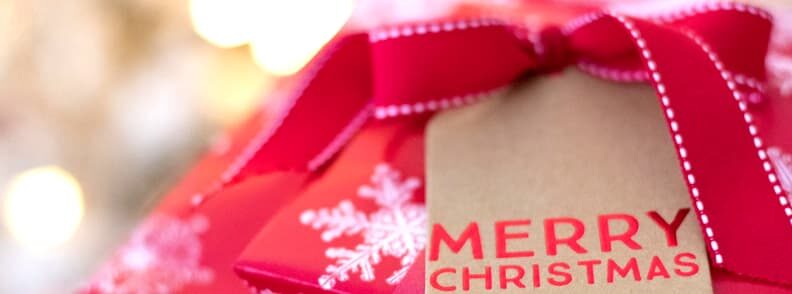
Special thanks
Special thanks for helping with information for the creation of this article on Christmas customs and traditions in Europe go to:
- Why Christmas
- World Holiday Traditions
- 196 Flavors
- Adele in Slovenia
- Adore Foods
- Ask Chef Dennis
- Budapest Moms
- CataVino
- Choose Your Cyprus
- Curious Cuisiniere
- Family Foodie
- Food Emperor
- Friendly Nettle
- Fun Russian
- Maltese Mouthful
- My Food Odyssey
- My Greek Dish
- Natasha’s Kitchen
- Nordic Food Living
- Oh, the Things We’ll Make!
- Polish Housewife
- RecipeTin Eats
- She Loves Biscotti
- Spanish Language Guide
- Swedish Food
- The Armenian Kitchen
- The Spruce Eats
- Hello Monaco
To learn more about European winter traditions at the Christmas dinner, head to JuszTravel.

Mirela Letailleur is a Romanian travel blogger living in the South of France. She writes on The Travel Bunny travel blog about affordable travel in Europe, creator of unique free travel guides, local travel expert. Problem solver. Wannabe coffee guru.
After discovering European customs and celebrations around Christmas, check out
Why you should celebrate Christmas in Madrid
Cheap Christmas Flights 2025: Book Your Tickets in 6 Simple Steps

